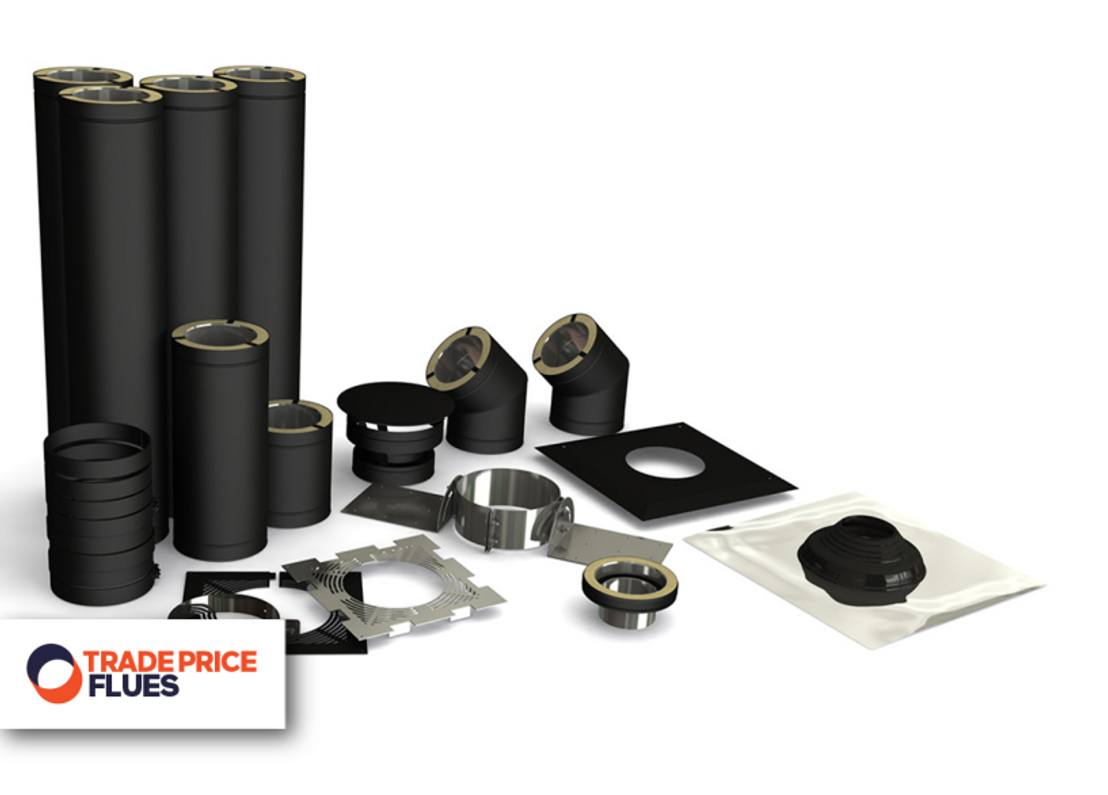How Does a Twin Wall Flue Work?
One of the most common questions we receive here at Trade Price Flues is: ‘how do twin wall flues work?’. If you want to find the answer to that question, then keep on reading as the Trade Price Flues team examines how twin wall flues actually work…
What is a twin wall flue?
Before we delve into the details on how twin wall flues work, let’s first define what we mean by the term.
Here at Trade Price Flues, we define twin wall flues as being a form of pre-fabricated chimney. They are typically used when someone is installing a log burner or oil or gas fired appliance in their home - but don’t have a traditional class 1 chimney.
Twin wall flues are typically made from a series of sections of cylindrical insulated stainless steel pipes. These individual pipes feature a ‘flue within a flue’ - hence the name twin wall flue. The space between the twin flue pipes is filled with insulating material (as per the image below):
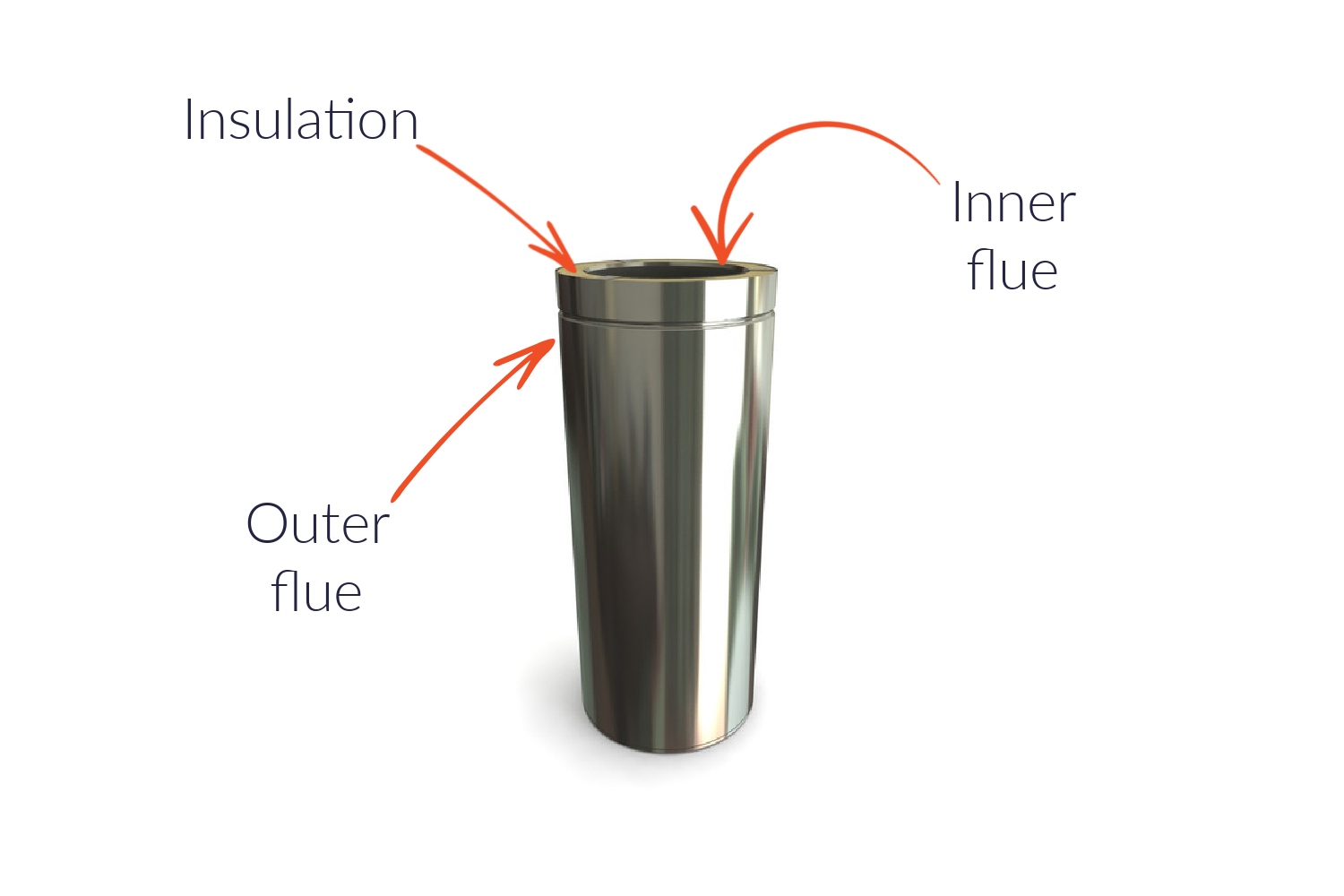
This means that twin wall flue systems are very well insulated. This makes them ideal for when the flue has to be passed through a floor or ceiling, or affixed close to combustible materials. The insulation also means the flue (and the device it is attached to) will perform better.
How do twin wall flues function?
Although they look very different from traditional brick and mortar class 1 chimneys, twin wall flues operate on the same principle.
Twin wall flues - like traditional chimneys - operate on what’s known as the ‘chimney effect’. That is, they work on the basis that hot air rises above cold air.
Once fully installed and with the attached appliance operating (be it a log burner or oil/gas appliance), the twin wall flue will be venting smoke and gases away from the fire.
As the smoke and gases rise, it creates a pressure difference in the room in which the appliance is situated.
This pressure difference causes the cold air in the room to be ‘forced into’ the fire. This in turn pushes the hot air carrying the smoke and combustibles up and out of the top of the flue.
It’s important to note that although it may seem as though the fire is ‘sucking in’ the cold air, what is actually happening is that the dense weight of cold air outside the building is pushing down to force air into the room, thus pushing cold air into the mouth of the fire.
This is why it’s essential that the room in which you place a stove/heating appliance has the right level of ventilation. Insufficient ventilation will interfere with this cycle of cold air/hot air.
All being well, this cycle of air will continue as long as the fire is burning in the stove/appliance.
Are twin wall flues better than other types of flues?
Yes. Twin wall flues are superior to single wall flues and traditional class 1 chimneys.
Let us explain why.
It comes down to the chimney effect that we described above.
As the proper functioning of the chimney effect relies on the pressure difference caused by the interaction between hot air and cold air, a twin wall flue can maximise the chimney effect.
How? One word; insulation.
Because twin wall flues contain a layer of insulation between the two flues (remember that one flue sits within another), this keeps the smoke and combustibles rising up the flue warm.
By contrast, single wall flues or traditional class 1 chimneys aren’t insulated as standard. On particularly cold days, this can result in the smoke and combustibles that are rising from the fire cooling down before they reach the top of the chimney. In the worst cases, they can cool down so much that they fall back down into the fireplace - completely interrupting the chimney effect.
So, in short, a twin wall flue - because of its insulation - will maximise the operation of the chimney effect. With the chimney effect in full force, this will have other benefits such as making it easier to light your fire, and making it burn more efficiently.
How should twin wall flues be installed?
There are a number of ways that twin wall flues can be installed, as well as several bits of best practice that will ensure your twin wall flue functions as well as possible.
First, let’s take a look at the two main ways in which twin flues can be installed:
> Twin wall flue internal installation.
> Twin wall flue external installation.
Twin wall flue internal installation
Twin wall flue internal installations refer to scenarios whereby the twin wall flue runs up through the inside of the property.
For example, if a log burner or other heating appliance is installed somewhere deep within a building (i.e. not against an external wall), then the attached flue will run up through the ceilings and roof of the property.
Because of this, twin wall flues being installed within a property have to be boxed in, or as the Building Regulations put it, ‘where a chimney passes through a cupboard, storage space or roof space’ a guard should be put in place.
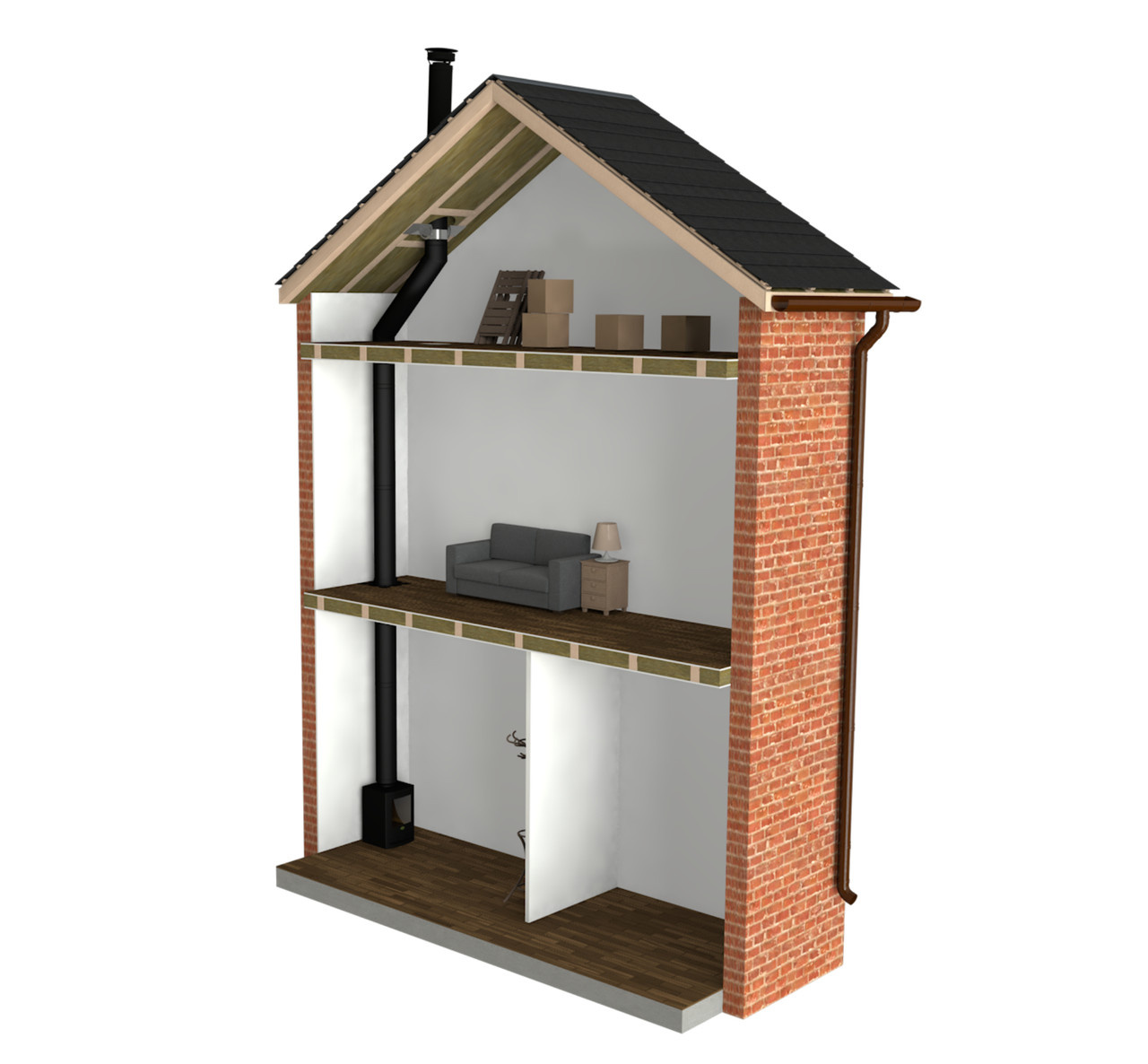
Example of an internal twin wall flue installation.
In addition to installing an appropriate guard, you also need to ensure an appropriate ‘distance to combustibles’. This refers to the gap between the outer surface of the flue and any surfaces it is passing through or near to.
The distance to combustibles varies depending on what type of twin wall flue you have purchased. Here at Trade Price Flues, our twin wall flues require a distance to combustibles of 70 mm.
Other than that, you also need to make sure that where the flue exits the roofline, there is enough of a gap between the roof surface and the top of the flue. The Building Regulations stipulate that this horizontal gap should be at least 2.3 metres.
Twin wall flue external installation
The second main type of twin flue installation you’ll spot is an external installation.
This refers to the scenario where the log burner or heating appliance is installed against the external wall of a property.
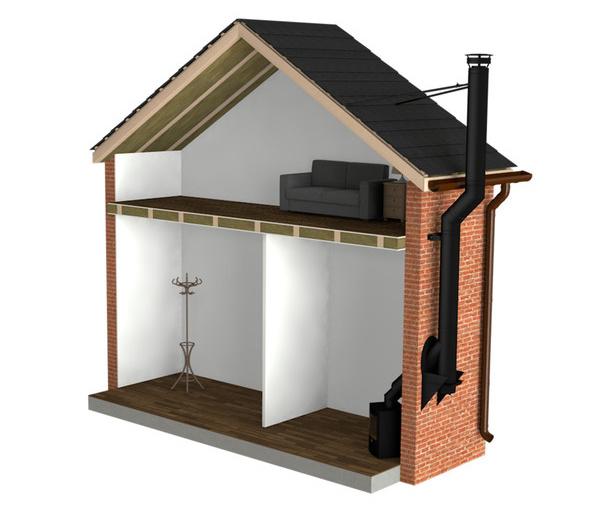
Example of an external twin wall flue installation.
The flue is first fed through the external wall horizontally, before reaching an elbow and then being routed vertically up the side of the property until it is past the roofline.
Twin wall flue installation best practices
In order for your twin wall flue to work at its best, and for the ‘chimney effect’ to be fully operational, there are a number of best practices you should follow. These are detailed below.
Use the correct installation components
As twin wall flues are made up of a series of sections, it’s important that you use the correct installation components.
For example, the individual flue sections will push together but should be secured in place using locking bands. Likewise, where the flue travels up the side of an exterior or interior wall, proper wall brackets should be used to affix it in place.
Other essential components that should be used include a flue adapter - which connects the flue pipe to the flue spigot on the top or rear of the stove/appliance.
If you are using an elbow in your flue - for example, where the flue pipe transitions from horizontal to vertical on an external installation - then you should use a base support which will help anchor the flue in place.
Using the correct components throughout the installation will ensure the twin wall flue functions correctly.
Keep it vertical
It is a best practice that at least 80% of your overall twin wall flue system is vertical. This helps gases and smoke to vent properly and will ensure the chimney effect isn’t impeded.
Watch those bends
According to the Building Regulations, twin wall flue systems should contain no more than four bends. The angle of these bends cannot exceed 45 degrees.
It’s also worth noting that where you have four bends in a flue system, you are required to have a soot door somewhere in between the bends in order to provide access.
Follow those guidelines and best practices, and you’ll end up with a twin wall flue system that provides optimum performance.
Twin wall flue information resources
We realise there’s a lot to take in when it comes to twin wall flues, which is why we’ve created a series of resources to answer any questions you may have:
> What Twin Wall Flue Regulations Are There?
> How to Install a Twin Wall Flue Through a Ceiling or Wall
> What Is a Twin Wall Flue System?
> What Size Twin Wall Flues Are There?
We’ll be continuing to add to these resources over time, so be sure to bookmark the Trade Price Flues blog.
Twin wall flue system buying options
When it comes to buying a twin wall system for your home, you have many options available to you.
Here at Trade Price Flues, we allow you to buy individual flue sections and components, or complete all-in-one kits. We can also help you put together a bespoke twin wall flue kit if you have a particularly challenging installation scenario.
Individual twin wall flue components
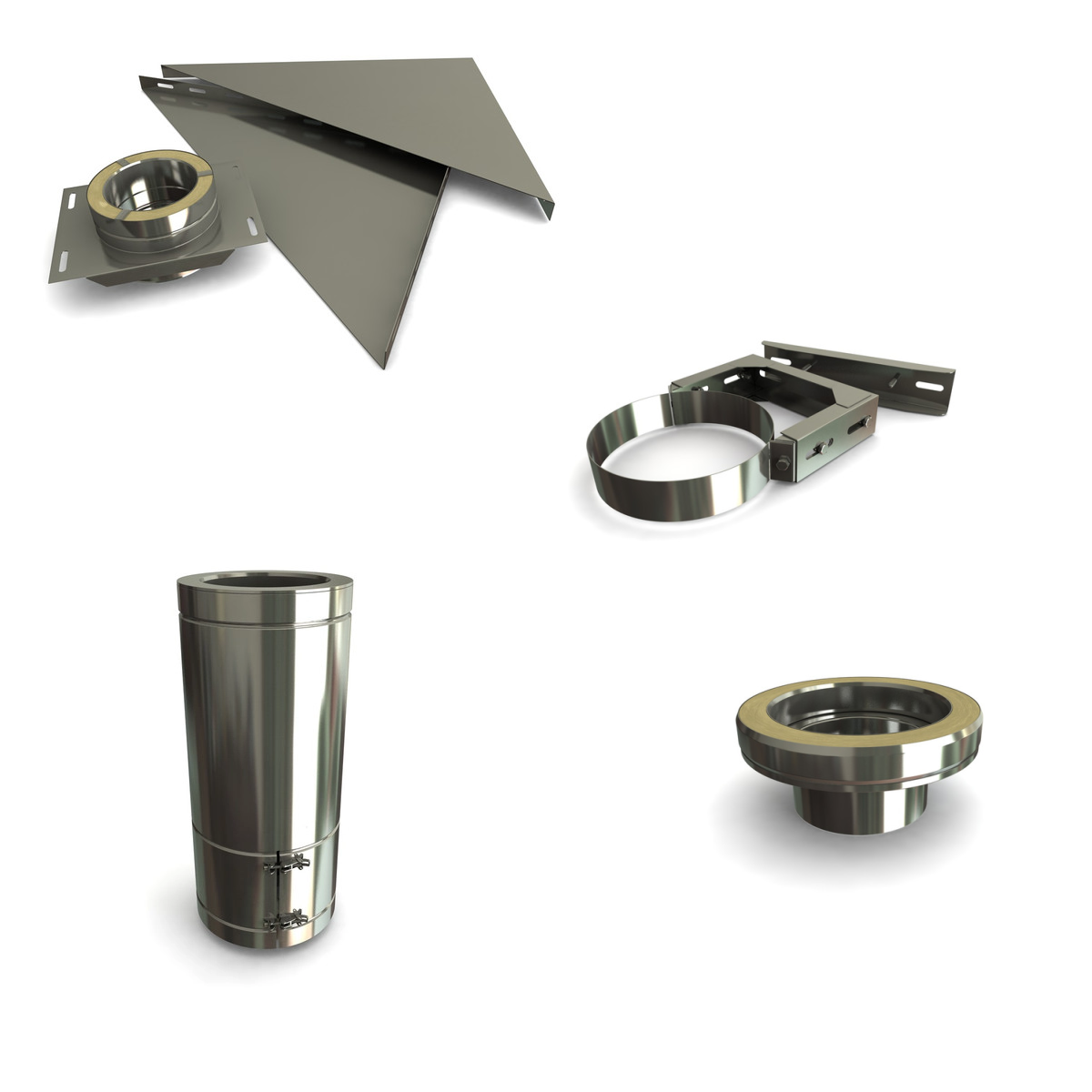
Shop Now - Individual Twin Wall Flue Components
Our range of individual twin wall flue components span everything from individual straight lengths of twin wall flue pipe, through to installation essentials such as flue adapters, wall brackets, base supports and more.
Complete twin wall flue kits
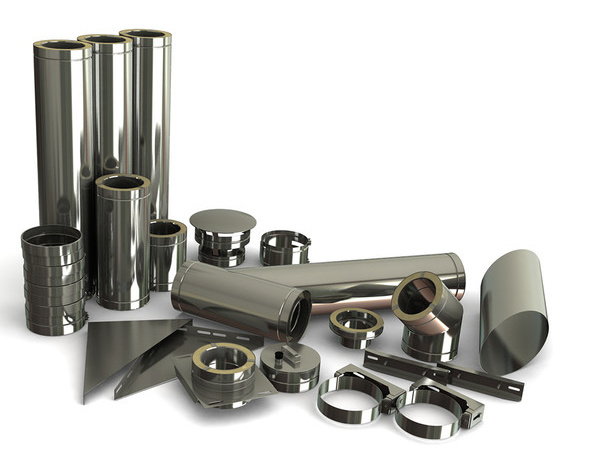
Shop Now - Complete Twin Wall Flue Kits
We have created a range of all-in-one twin wall flue kits for multiple installation scenarios, from internal and external to single storey to double storey.
All of our twin wall flue kits also come with the necessary installation components such as locking bands and wall brackets. To top it all off, our twin wall flue kits include a 30-year no quibble warranty too!
Trade Price Flues: the trusted name for twin wall flues
As you can see from our 30-year no quibble guarantee, our twin wall flues are amongst the best on the market - trusted and used by tradespeople and DIYers alike.
If you’re looking for a twin wall flue system for your home, then buy it from Trade Price Flues where we offer trade prices, nationwide delivery and a huge range of options to choose from.
Shop twin wall flues now
For more chimney and flue advice, read the Trade Price Flues blog…
What Is a Fireplace Chimney Gather? | The Causes of Chimney Downdraft and How to Prevent It | What Sort of Air Vents Do I Need for My Stove or Fireplace?
Latest Articles
-
Air Pollution Down in the UK Despite Record Wood Burner Sales
Great news! Wood-burning stoves, once considered environmental villains, have transformed into eco-f …18th Apr 2024 -
A Guide to Stove Installation in Lodges, Sheds, and Shepherd’s Huts
Shepherd’s huts, lodges, and sheds have become increasingly popular as charming retreats or alternat …25th Mar 2024 -
Pinned vs. Pinless Moisture Meters: Which is Best for Firewood?
When you collect or buy firewood, it usually starts very moist inside. Using sopping wet wood to bur …4th Mar 2024




